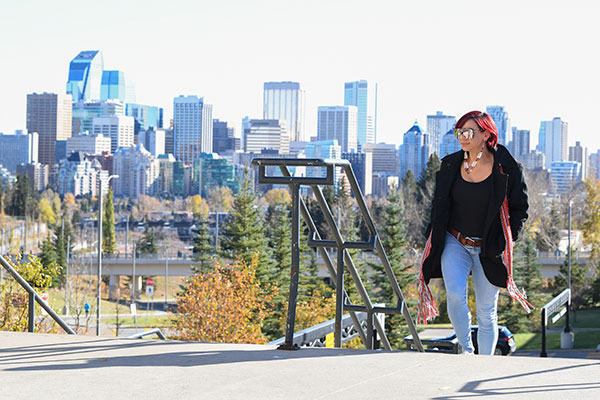A verbal or written land acknowledgement honours the Indigenous tribes who called the land home before the arrival of settlers, provides education about regional history and is an important part of reconciliation. Share a land acknowledgement as part of an event or gathering or in your email signature.
Acknowledging the land should always be approached with intention and mindfulness. Discover tips for crafting a meaningful acknowledgement, learn how to pronounce the Treaty 7 First Nations and get started with SAIT's Indigenous land acknowledgement below.
Land acknowledgement
Oki, Âba wathtech, Danit'ada, Tawnshi, Hello. SAIT is located on the traditional territories of the Niitsitapi (Blackfoot) and the people of Treaty 7 which includes the Siksika, the Piikani, the Kainai, the Tsuut’ina and the Îyârhe Nakoda of Bearspaw, Chiniki and Goodstoney. We are situated in an area the Blackfoot tribes traditionally called Moh’kinsstis, where the Bow River meets the Elbow River. We now call it the city of Calgary, which is also home to the Métis Nation of Alberta.
Natoysopoyiis Resource Centre
To learn more and connect with the Indigenous community at SAIT, visit the Natoysopoyiis Resource Centre.
NatoysopoyiisOur Organization

Oki, Âba wathtech, Danit'ada, Tawnshi, Hello.
SAIT is located on the traditional territories of the Niitsitapi (Blackfoot) and the people of Treaty 7 which includes the Siksika, the Piikani, the Kainai, the Tsuut’ina and the Îyârhe Nakoda of Bearspaw, Chiniki and Goodstoney.
We are situated in an area the Blackfoot tribes traditionally called Moh’kinsstis, where the Bow River meets the Elbow River. We now call it the city of Calgary, which is also home to the Métis Nation of Alberta.
